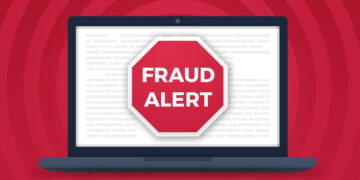As the name implies, patient identification refers to authenticating the identities of the patients. Also, it is more formally known as ‘Know Your Patient’ or ‘KYP’. The traditional health care industry services may not be concerned with the patient identification process. However, online health service providers are the ones most related to the ‘know your patient’ process.
That said, have you ever thought about why do online health service providers require patient identification? It is very important in securing patient data. An online drug order for any medical condition could be used for a non-medical purpose as well. Therefore, it is necessary to perform patient identification for authenticating prescriptions.
In April 2019, the General Pharmaceutical Council (GPhC) of the UK, issued guidelines for the pharmacies which provide drugs online. The GPhC guides the online pharmacies relating to the sale of certain drugs. It advises performing patient identification before the selling of opiates, medicines for diabetes, medicine for asthma, and medicines for epilepsy.
KYP is not only patient identification. It also helps the healthcare industry and healthcare providers. Identity and credentials theft is no longer limited to financial institutions or the e-commerce industry. Today, the healthcare industry is equally exposed to the threats of identity thefts. It is equally vulnerable to digital crimes as much as some other industry.
What are Patient Identifiers for Patient Identification

The identifiers for the patient identification are the same as the ‘Know Your Customer’ or ‘KYC’ process. The healthcare industry can make use of face or document verification for future verifications. Face verification helps in storing unique biometric features of patients. Document verification helps in keeping and storing unique data of the patients.
Such identifiers can go a long way in helping the healthcare industry with patient identification. This way only legitimate requests can be served.
Patient Identification Policy for the Healthcare Industry
Pharmacies, as you would know, are obliged to possess a working license. This working license legitimizes the pharmacies for selling the medicines. A pharmacy or healthcare industry operating without a proper license poses threats to the patient’s data. It can access and misuse the patient data since it is disguised as some drug selling pharmacy.
Similarly, legitimate online pharmacies and hospitals with e-health services are obliged with certain policies. Verifying the patient’s age is the primary obligation for selling drugs or providing health services online.
Age verification compliances, however, may vary from one region to the other.
How to check the identity of the patients
Patient identification is the same as some normal identity verification. It differs in that it is used for the identity verification of the patients. It is also used to verify the identity of the patient who orders the medicine online.
Patient identification usually involves the following steps:
1. Patients upload pictures of some government-issued document ID document using a smartphone camera or web camera. The document for patient identification can be a passport, driver’s license, or some national-ID card
2. The next step requires the user to upload a real-time selfie. The biometrics obtained from the real-time selfie is cross-matched with the picture on the document.
3. The document verification is also performed before matching the biometrics with the picture on the document.
4. Age verification is also involved. This is to make sure that the patient meets the minimum age criteria. A background check may also be performed. This is for certain that the patient is not some wanted fugitive or criminal.
5. Subject to the verification results of patient identification, patient medicine request is approved or disapproved.
Also Read: [pii_email_95fb429ddab3b9357c9f] Error Solved









